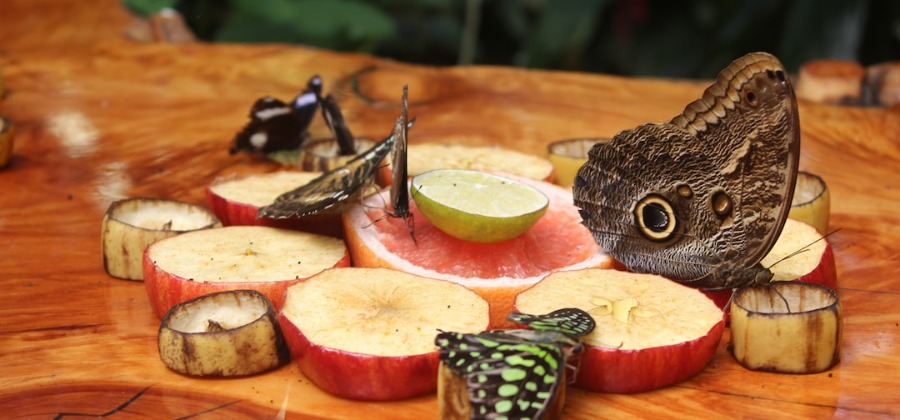Moths are one of the most common yard pests. They come in all shapes and sizes and are not afraid to multiply rapidly. Luckily, you can do a few things to get rid of them.

This article will outline the simplest and most effective ways to get rid of moths in your yard. From using natural remedies to using harmful pesticides, follow these tips to get rid of moths for good!
How to Get Rid of Moths in Your Yard
If you’re looking for an easy way to get rid of moths in your yard, one option is to use a moth-killing product. There are many different products on the market, so it can be hard to decide which is right. Some popular moth-killing products include sprays, aerosols, and candles.
To use a moth-killing product, first identify the type of moth causing problems. Then, find the product specifically designed to kill that type of moth. Finally, use the product according to the instructions on the package.
Moth-killing products work best when they are used early in the season when populations are smaller. However, they can also effectively control populations during late summer and fall when they are larger.
Different Types of Moths
Various moth species can be a nuisance in yards, including the common clothes moth, the tobacco hornworm, and the palm fruit moth. Each type of moth has unique habits and needs that should be considered when trying to get rid of them.
Common clothes moth: The common clothes moth is a small, light brown moth commonly found on clothing. This moth is attracted to natural fabrics (such as cotton) and often congregates in large numbers in areas where clothing is stored or worn. Remove any affected items from the premises to get rid of the clothes moth and treat any clothing with an insecticide spray.
Tobacco hornworm: The tobacco hornworm is a large, black, and yellow caterpillar that feeds on tobacco leaves. This caterpillar can cause extensive damage to plants in fields, so it is important to avoid contact with it while feeding. To get rid of the tobacco hornworm, apply an insecticide spray directly to the caterpillars or use hot tar paper to trap them in place.
Palm fruit moth: The palm fruit moth is another large caterpillar that feeds on palm tree fruits. This caterpillar can cause extensive damage to plants in yards, so it is important to avoid contact with it while feeding. To get rid of the palm fruit moth, apply an insecticide spray directly to the caterpillars or use hot tar paper to trap them in place.
How to Kill Moths
There are a few methods for getting rid of moths. You can use natural moth killers like diatomaceous earth or pyrethrum or chemical moth killers like carbaryl or permethrin. You can also set up barriers to keep them out, such as using moth-proof lights or screens on windows. Finally, you can use traps to catch them.
What to Do if You Find Moths in Your Yard
If you find moths in your yard, there are a few things you can do to get rid of them. You can use a vacuum cleaner with a hose attachment to remove any wings and bodies on the ground. You can also use a broom to sweep the area clean. Finally, you can pour water over the area and wait a few hours for the moth larvae to drown.
How to Make a Moth Trap
There are a few different methods for making moth traps. You can use a paper clip to suspend a small piece of cheese over a light or an old sock. The sock will trap the moths as they land on it, and then you can remove them by gently pulling off the sock.
Another method is to use chocolate chips or pieces of fruit that have been coated in sugar. The moths will fly into the chocolates or fruit and get stuck, at which point you can remove them.
How to Get Rid of Moths the Humane Way
There are a few ways to get rid of moths without harsh chemicals. Methods that work well include trapping them with a baited trap, using natural predators such as wasps or bats, and using an electronic moth catcher.
Some people prefer to use traps because they are easy to set up and can be reused frequently. To make a moth trap, place a small cake or cookies in the center of a plastic jar or container.
Add some water so that the bait is submerged. Place the trap near areas where moths are suspected to be congregating. Once caught, release the moths outside, where they can fly away.
Another method is to use natural predators such as wasps or bats. To attract these animals, you may want to put some flowers or fruit near your home where they can find food. Once attracted, the wasps will sting the moth repeatedly until it dies.
Bats also eat moths, but they are less common in warmer climates, so you may have more success if you try this method in colder climates.
Finally, an electronic moth catcher can capture insects by emitting RF (radio frequency) waves that cause them to fly into a contained area. These devices are typically plugged into an outlet and use little energy, so they are good for use during power outages.
Frequently Asked Questions
How can I get rid of moths in my yard?
There are several ways to get rid of moths in your yard, but the most effective is usually using a combination of methods. Here are some tips:
1. Try a natural moth deterrent like soapy water or apple cider vinegar.
2. Place sticky traps around the perimeter of your yard to capture adult moths and release the females into the wild.
3. Use a vacuum cleaner with the hose attachment to remove moth larvae and pupae from hard-to-reach places.
4. Use a mythical soap to kill adult moths on contact.
5. Apply a light dusting of diatomaceous earth to areas where moths are common.
6. Hire a professional to help get rid of moths.
7. Try to prevent moths from building their nests in the first place by cleaning up any debris that can provide shelter, discarding old furniture or appliances that might attract them, and keeping your yard well-maintained.
What is the life cycle of a moth?
The life cycle of a moth typically goes like this: a female moth lays eggs that turn into larvae after being covered in a sticky substance. The larvae then feed on organic materials before becoming pupae. The adults emerge from the pupae and fly around until they find a mate. After mating, the females lay more eggs which will become new larvae.
What are some other common types of moths?
There are several other common types of moths, including the common clothes moth, the tobacco moth, and the pantry moth.
Conclusion
Moths are one of the most common pests in yards and homes. Here are some tips on how to get rid of them: -Remove any standing water where moths congregate -Keep your home clean and free of clutter -Remove any plants that can provide a hiding place for moths -Eliminate sources of food for moths, such as bird feeders.




Leave a Reply